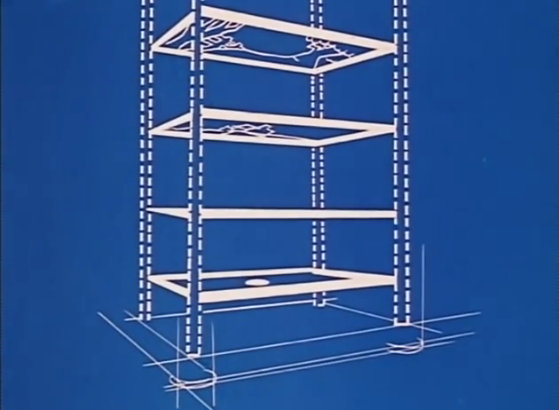Often on Behind the Effects we cover sequences that are incredible to behold, but fairly simple to execute. Today however we will be looking at the opposite: a sequence that seems kind of simple, but was actually quite difficult to produce. Just watch the scene from Bambi bellow (fast forward to the 1:20 mark to see what’s important,) and we’ll start exploring some secrets of classic Disney animation.
“What’s so crazy about that,” you say? “That was just a bunch of cartoon trees,” you
say? Well if you think that was a pretty
"meh" sequence to watch, then maybe you should meet The Multiplane Camera.
The Multiplane Camera was invented by Ub Iwerks back in the
early 30’s, and, in its original form, consisted mostly of car parts. Its purpose was to create the illusion of
depth and distance in animated films which, of course, are two dimensional in
nature. So when the camera pans through
the castle in Snow White or pans right in a field in Alice in Wonderland it
feels as if what we’re looking at has some level of reality to it, and it’s all
thanks to Ub Iwerks and The Multiplane Camera.
Now for a little explanation: A basic panoramic animation
sequence is shot using a single lengthy strip of scenery which is slid through
the camera’s view in conjuncture with the movements of any animated characters. The camera points straight down so that the
animation can lay flat, and the whole apparatus looks something like this. . .
The man in the above picture is placing the animation cell,
clear celluloid that contain any animated characters for the scene, for a Donald
Duck cartoon. For each frame of the
cartoon another cell has to be made, and each cell made this way must be placed
into the frame on top of the scenery individually to be filmed.
A Multiplane Animation Camera on the other hand uses not one
long panoramic background but multiple panoramic backgrounds. Little animation centers like the one in the
last couple of pictures are stacked atop each other on mobile treys. These treys can be moved forward and sideways
as well as closer and further away from the camera. So if a rock or a castle
is further in the background than another object, the scene can be animated to
make the further object seem legitimately further.
In the video that kicked off this behind the effects some
trees appear closer than others; those trees move faster across the field of
view then ones that are further back, and that’s because they are on the top
most trey, or plane, of The Multiplane Camera.
The furthest ones are at the back, and the middle ones are, where else,
the middle. In the below picture of a
more modern Multiplane Camera rig, you can see three or four of these treys in
black rims with translucent tables, as they often are. I hope the context given today will help you
appreciate the brilliant animation of those clasic cartoons even more.
The Multiplane Camera was so effective that it was used in nearly
every Disney animated film from Snow White to The Little Mermaid (in the
90's digital effects began to make the process obsolete.) It's
impressive that a single cinematic animation strategy could stay
relevent for that long. animation from movies that came out less then a
decade ago look out-dated, but many of these classic animated films of yester-year hold up
perfectly well.
And speaking of the animation of yester-year: Here’s one of the greatest animated shorts of
all time, The Old Mill. See if you can
spot where they used The Multiplane Camera in this great classic cartoon.
Thank you very much for reading! If would like your two dimensional life to appear as if it had a third dimension, I suggest you email me at atchleyosaurus@gmail.com. Come back this weekend for a dog "Gone" new movie review!







No comments:
Post a Comment